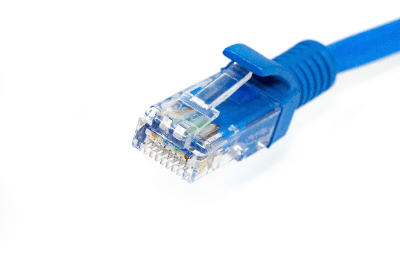What Is a Local Area Network (LAN) Connector?

A LAN connector is a hardware interface that connects a network cable to devices like PCs, enabling communication within a network. It typically involves a male connector on the cable and a corresponding female connector on the device.
The RJ-45 plug is the most prevalent type of LAN connector, featuring 8 pins for transmitting and receiving data. Designed to prevent incorrect insertion, it includes a securing clip to ensure a stable connection.
Uses of Local Area Network (LAN) Connectors
LAN connectors facilitate the physical link between network devices and the broader network, ensuring a stable and secure communication path. The connectors are integral to setting up wired network connections in various settings, from home networks to large-scale enterprise environments.
Principle of Local Area Network (LAN) Connectors
LAN connectors are designed for differential signal communication, with separate terminals for positive and negative signals. This design supports low signal attenuation and high-speed communication, accommodating different LAN speeds with specific terminal configurations. The form factor for both male and female connectors is standardized globally, following specifications set by regulatory bodies like the FCC.
How to Select a Local Area Network (LAN) Connector
Selection is based on the required LAN speed, distinguishing between connectors suited for Category 5 (100 Mbps) and Category 6 (1 Gbps) communications. While Category 6 connectors can support both standards, using a Category 5 connector in a Category 6 network may lead to communication errors due to inadequate transmission performance.
Other Information on Local Area Network (LAN) Connectors
1. Connector With Built-in Pulse Transformer
To address the challenges of using long cables in LAN communication, some connectors integrate a pulse transformer directly, enhancing circuit compactness and cost-efficiency.
2. Connector With Built-in LED
Integrated LEDs in connectors provide visual communication status indicators, although this design choice may increase the connector’s physical size.
3. Metal Shell
Connectors encased in a metal shell offer improved electromagnetic compatibility (EMC) performance by shielding the connection from external noise. However, this can also result in a larger connector size.